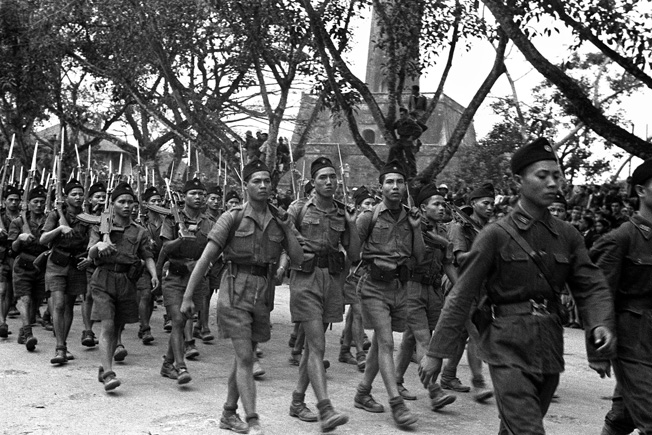War Background
 |
| Viet Minh Soldiers in Hanoi, April 1946 |
At the signing of the treaty of Versailles, Vietnam issued a plea for self determination. Motivated by the desire to reform economic inequality in the country, many Vietnamese wanted to pursue communism. As a primarily Buddhist peasant nation, land redistribution was popular with the Vietnamese. Because the U.S. wanted to avoid communism's spread, and President Truman did not want to appear weak, the U.S. ignored Vietnam's plea for self-determination. By 1950, China and the USSR had recognied Ho Chi Minh as Vietnam's leader, and both countries were sending aid to Vietnam. Under President Eisenhower, the French were given even more U.S. aid to help them stay in power (continue imperialism in Vietnam). Again, the idea here was to prevent the spread of communism.
As this clip demonstrates, the role of the U.S. as 'world police' lasted well into the 1980s. U.S. leaders were convinced that the threat of communism could spread if they didn't step in. This led consecutive presidents to take further action into what was really a Vietnamese civil war.

Comments
Post a Comment